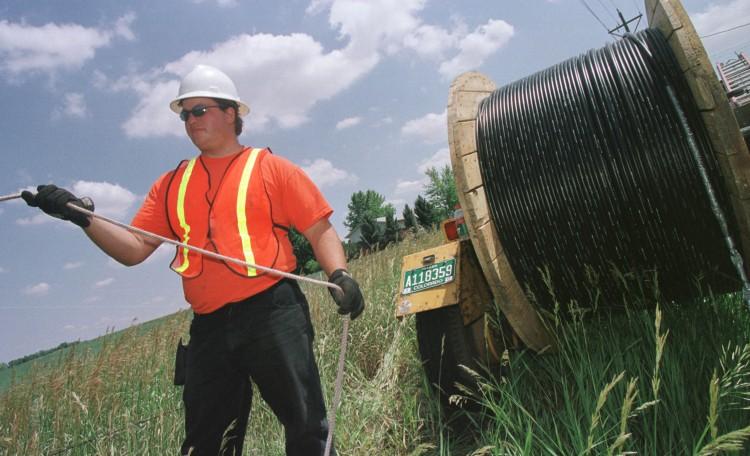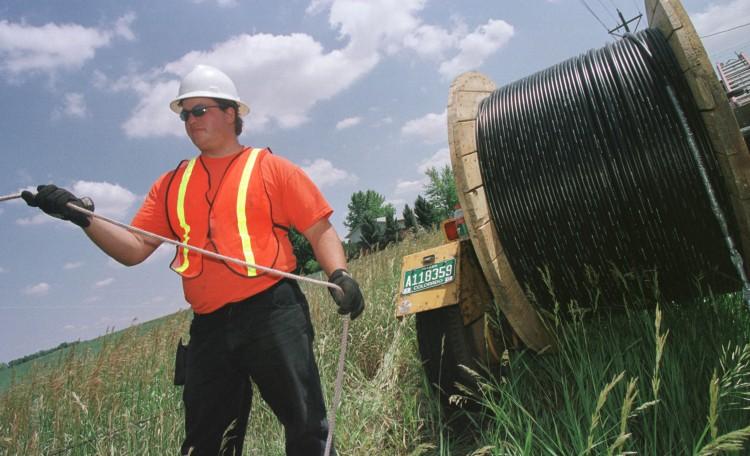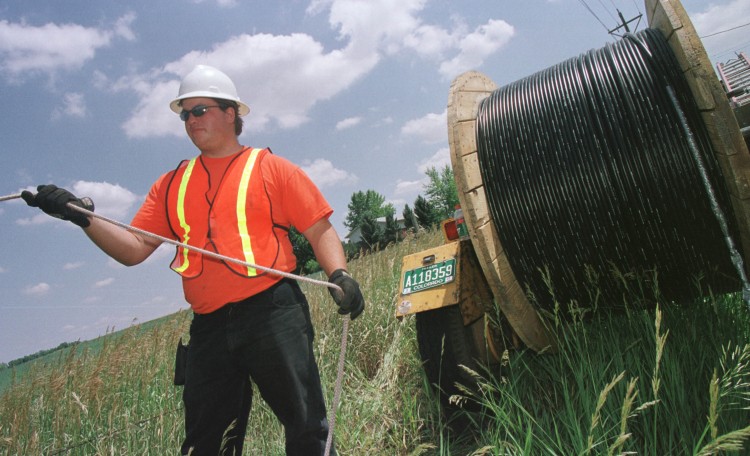Six years ago, the tiny rural town of Dawsonville, Ga., some 60 miles north of Atlanta, was facing a dire future, but through the Broadband Technology Opportunities Program, a cutting-edge, fiber-optic broadband network opened doors and offered solutions.
Like many regional communities, Dawsonville’s local industries were struggling, and with the national economy contracting, civic leaders wondered how the town would survive. At that time, Bruce Abraham and colleagues on the board of directors at the telecommunications agency North Georgia Network (NGN) did not know “[optic] fiber from muffins.”
That all changed, however, when a government grant helped the company roll out its “big honking network.” The digital age had arrived in the tiny town, and prospects for the future suddenly looked bright.
“We have raised expectations by bringing this infrastructure into the region,” Abraham said at a forum at the Brookings Institution in Washington, D.C., in early January. Initially, it was a challenge to bring the community on board—it took a “push affect” to get it going— but “now everybody’s pulling us … and it’s a great phenomenon,” he said.
The forum focused on the Broadband Technology Opportunities Program (BTOP), a national awards program designed to encourage access to high-speed Internet in regions across the United States.
Around 14.5 million rural Americans—nearly 24 percent of the 61 million people living in rural areas—had no fast Internet service to their homes as of June 2011, according to the Federal Communications Commission (FCC). An Internet service is considered to be broadband by the FCC if it transmits at a speed of at least 4 megabytes per second.
The NGN—a coalition of county economic development authorities, a state university, and two electric co-operatives—was one of 230 projects selected through the BTOP awards scheme. The group received $33.5 million, and with that rolled out a 1,100-mile fiber-optic network across 12 counties, transforming a 50-year-old dial-up service into an internationally competitive telecommunications platform, which offers speeds of up to 1.2 gigabytes per second.
Over 300 businesses and hundreds of anchor institutions now receive high-speed Internet in north Georgia, including schools, college campuses, libraries, and hospitals, according to the National Telecommunications and Information Administration (NTIA), which oversees the grants.
The rollout, according to Abraham, has been transformative. In the private sector, technology parks and telecommunications workers are surfacing, but it is the boost to industry that is most noticeable.
The metal fabrication company Impulse Manufacturing is a testament to the economic boost. Under the old telecommunications system, the company was losing clients because its Internet connection was too slow to send designs down line. Under the new optic fiber system, data is transmitted in milliseconds. Impulse now conforms to Fortune 500 company protocols, Abraham said, and Mercedes Benz is now among its clients.
In the public sector, institutions like hospitals and schools are also realizing the advantages of fast and accessible Internet. Three years ago, a local hospital was accessing patient information physically from boxes of files stored in the basement. Now the information is stored electronically, and patient data is available at the push of a button.
Similarly, with Internet speeds jumping from 45 Mbps to 1.2 Gbps, schools and universities are embracing interactive online teaching strategies, streaming lectures, and offering online courses.
As Significant as Electrification
Lawrence Strickling, NTIA administrator, believes that broadband infrastructure is as significant as the rollout of electricity to regional America nearly 80 years ago.
People need the Internet to find jobs, government services, educational opportunities, and even health care information; communities need the Internet to attract business and promote job opportunities, Strickling explained at the Brookings forum.
The BTOP, initiated as part of the 2009 American Recovery and Reinvestment Act (ARRA), allocated $4.7 billion to help expand access to high-speed Internet.
The program focused on three key areas: infrastructure like the NGN; public computer centers like libraries, schools, and housing developments; and sustainable broadband adoption programs, which involve educating people in digital literacy.
Getting America online, however, seems an immense task, as one of the biggest challenges is convincing people to use the Internet. While basic broadband is available to around 90 percent of the population, only 68 percent of U.S. households subscribe to broadband, according to the Census Bureau. That leaves around one-third of households—more than 100 million people—without broadband.
“This has to be a troubling statistic in the 21st-century economy, when broadband access and digital literacy skills are needed to compete in the workforce,” said Strickling. “And it is even more troubling when we hear what Americans tell us about why they don’t adopt broadband. Nearly half of not-adopting households have cited a lack of interest or need as the primary reason.”
Digital Literacy Critical
Susan Corbett, owner and CEO of telecommunications company Axiom Technologies based in Maine, said that digital literacy is critical.
“We knew as a company that, going into this back in 2005, that it wasn’t enough just to connect someone [to the Internet]. We had to teach people how to use it,” she told the forum.
Axiom used a $1.4 million BTOP grant to help 10 local lobstermen and 10 local blueberry farmers manage their businesses digitally. The company not only helped them design software specific to their needs, but also employed an educator and an entrepreneurial coach as well as provided digital literacy classes.
Most people running businesses today are on average between 40 and 60 years old, according to Corbett. They did not grow up with Internet technology, and as Abraham puts it, “They don’t know what they don’t know.”
The Maine farmers and lobstermen can now do everything digitally, from entering data on a spread sheet and filling out government forms to designing labels, running their own blogs, and producing their own business cards.
As part of the BTOP grant, Axiom also offered digital literacy training programs across Washington County, incorporating 18 public libraries. The Maine State Library was able to facilitate the program through its own BTOP funding, which provided desktops and laptops in 107 public libraries statewide. A number of those libraries also received videoconferencing equipment.
Corbett said that demand is growing for the training programs as people come to see the benefits.
There is much more work to do, according to Strickling, but the BTOP is a start. Additionally, the NTIA is in the process of collating lessons learned through the program, with an eye on developing an online toolkit to help other communities benefit from digital technology.
The Epoch Times publishes in 35 countries and in 21 languages. Subscribe to our e-newsletter.






